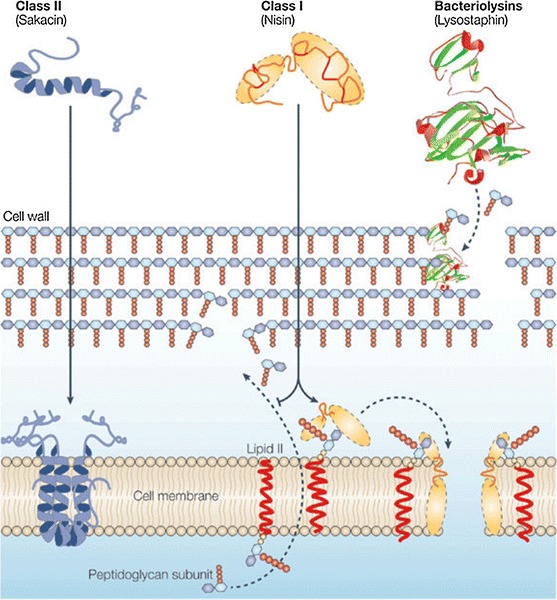Fig. 5.

Bacteriocins produced by LAB are grouped into three classes based on structure and function: class I (lantibiotics), class II, and bacteriolysins. Class I lantibiotics, such as nisin, can have two modes of action. First, they bind lipid II to prevent peptidoglycan subunit transport, disrupting peptidoglycan synthesis and cell division. Second, they dock at lipid II to create pores in the cytoplasmic membrane of the bacteria. Class II bacteriocins, such as sakacin, often contain amphiphilic helical structures which can insert into the cell membrane, leading to cell lysis. Bacteriolysins, such as lyostaphin, are large hydrolases which directly degrade the peptidoglycan cell wall. Reprinted with permission of Macmillan Publishers, Ltd, from Cotter et al. (2005), copyright © 2005 Nature Publishing Group
